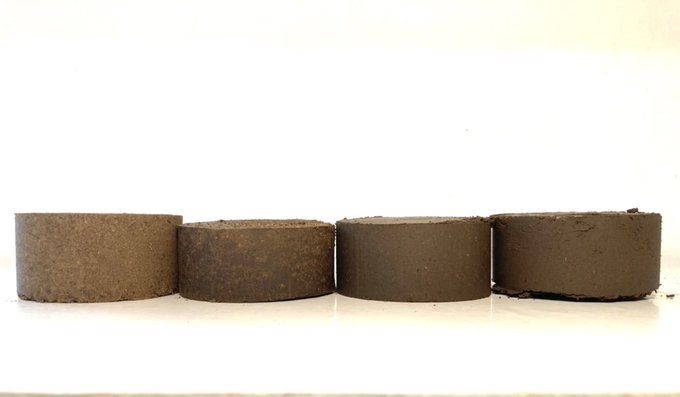What is meant by Proctor density?
Proctor density is the optimum water content at which a soil will compact to its maximum density under any particular applied and controlled load. It’s also know as the moisture-density relationship test or Standard (also Modified) Proctor Test. Basically this means that soil will compact to different amounts depending on the water content of the soil. This is because particles can move around and slot together the best when the ratio of water to air is just right. Too little water and air pressure builds up preventing particle movement. Too much water and the water pressure builds up, again preventing particle movement. It therefore follows that Proctor density is highly dependent on soil particle size characteristics, organic matter and the load that is being applied.
Although this property of soil has been know since at least the turn of the last century, it was quantitatively derived by Ralph Roscoe Proctor, an American civil engineer in 1933 during construction of the Bouquet Canyon Dam.
What is the Proctor density used for?
In an engineering context, understanding the moisture-density relationship ensures that soil can be compacted as much as possible pre-construction. This reduces the risk of soil movement e.g. from slumping and erosion, post construction. In a soil science context, it is a controlled way of achieving high bulk densities found in the field without applying unrealistic force to the soil. Plus, it limits the negative impacts a build-up of pressure can have on soil micro-structure. From an agricultural perspective, it is a risky time to take machinery out on the field if you want to avoid problems associated with soil compaction. It is therefore a fundamental soil science principle with very practical implications.
How do you measure Proctor density?
Proctor density takes the form of a parabolic curve calculated as a relationship between soil moisture content and dry bulk density. In general, the test is performed by taking soil of progressively greater water contents and packing them into a standard mould using a controlled weight (like this and this one from ELE). The soil puck is then oven dried and weighed. The relationship between density (g/cm3 or kg/m3) can then be plotted against soil percentage moisture.

Typically, soil is sieved to pass a certain grade. It is then dried or wetted to a range or water contents. These soils are then sealed and left to equilibrate overnight before being used the next day to perform the test. The soil is packed gradually in layers by dropping a known weight from a known height (i.e. known force) until the mould is filled. It is then weighed before drying at 105oC in an oven for 24-48 hours.
What does it mean to have 95% compaction?
This is a term used in engineering which means that the soil in the field is 95% of the compaction achieved under standard laboratory conditions or 95% of the theoretical compaction limit. It is a benchmark that is useful to tell if a construction site has reached a suitable compaction level.

Handy Resources and Open Access Further Reading
- ELE International – this is where we got our Proctor hammer from
- Correlation of reduced and standard Proctor tests – Shivaprakash and Sridharan (2021) Geotechnical Engineering.
- Comparison of Proctor test and vibrating hammer test using non-standard materials – Zvonarić et al. (2021) New Frontiers in Sustainable Geotechnics
- Comparison of static compaction and Proctor tests – Kayabali et al. (2020) Bulletin of the Mineral Research and Exploration
If you’ve enjoyed reading this, I try to post weekly content relevant to all levels of researchers working in the field of plant and soil science and to help demystify the life of academia.
Coffee I’m drinking: Horsham Coffee Roaster: Workhorse
Books I’m currently reading: 20,000 Leagues Under the Sea by Jules Verne
Previous post: How to create simple diagrams in Inkscape – a guide for plant and soil scientists


One thought on “Soil Physics 101: What is Proctor density?”